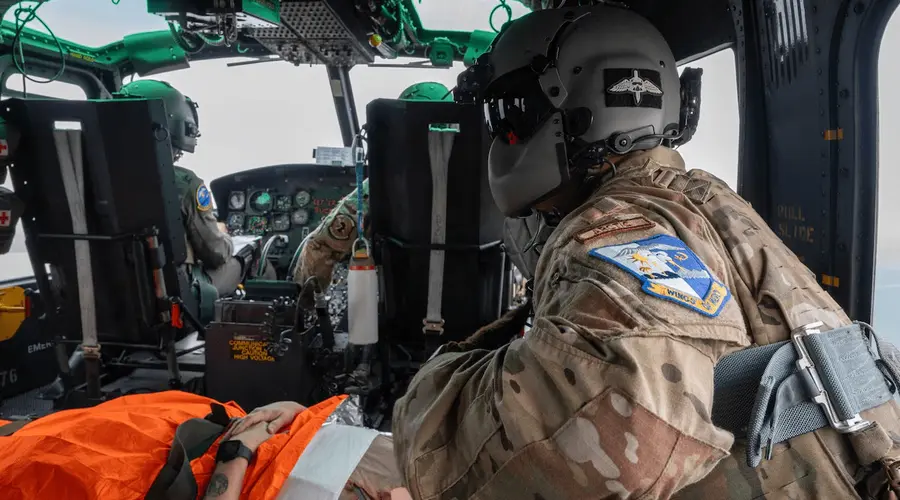Here’s a scary thought: you’re 35,000 feet in the air… and the pilot suddenly has a heart attack while flying.
Sounds like a nightmare, right?
But here’s the truth…
Commercial airlines are built to handle exactly this kind of situation. From strict medical checks for pilots to in-flight protocols that kick in instantly, there’s a system designed to keep passengers safe even if the worst happens.
In this post, you’ll learn exactly what happens if a pilot suffers a heart attack mid-flight (and why you’re still safer than you think.
Let’s dive right in…
Read more
Table of Contents
ToggleWhat if a Pilot Gets a Heart Attack While Flying?

So, here is a breakdown of what exactly happens in these kinds of situations.
Insights are collected from Pilot explanations, Quora, and Reddit.
Every commercial flight has at least two pilots: the captain and the first officer (co-pilot). Both are fully trained and certified to operate the aircraft independently.
If one pilot becomes unconscious due to a heart attack while flying or any other medical emergency, the other pilot immediately takes full control. This is a standard procedure and something pilots are trained for during simulator sessions.
The healthy pilot will:
- Take over the controls if they weren’t already flying.
- Engage the autopilot (if not already on) to stabilize the aircraft.
- Communicate with Air Traffic Control (ATC) to declare a medical emergency and request priority landing.
The aircraft remains completely safe because modern planes are designed to be flown by a single pilot when necessary.
Medical Response in the Cockpit

Once the aircraft is stable, the co-pilot will call the cabin crew for immediate medical assistance. Most flight attendants are trained in basic first aid and CPR. Many airlines also carry Automated External Defibrillators (AEDs) onboard to handle cardiac emergencies.
If there’s a doctor or medically trained passenger onboard, they may be called to assist. However, the priority remains getting the plane on the ground as soon as possible rather than performing complex medical interventions mid-air.
Emergency Landing Procedures
After declaring a medical emergency to ATC, the co-pilot will request the nearest suitable airport for an emergency landing. Air Traffic Control will prioritize the flight, clearing airspace and giving it the fastest possible route to land.
In most cases, the plane will divert to the nearest major airport with medical facilities. Emergency medical teams will already be waiting on the ground to treat the pilot as soon as the plane lands.
This entire process from the onset of the emergency to landing can happen surprisingly quickly, depending on the aircraft’s location.
Case Studies of Pilots Suffering Heart Attacks Mid-Flight
Case Study 1: American Airlines Flight 550 (2015)
In 2015, Captain Michael Johnston suffered a fatal heart attack while flying an Airbus A320 from Phoenix to Boston.
- What Happened: The co-pilot immediately declared an emergency and diverted to Syracuse Hancock International Airport.
- Outcome: The first officer landed the aircraft safely, and passengers were never in danger.
The incident highlighted the importance of two-pilot operations and strict emergency training.
Case Study 2: China Eastern Airlines Flight MU5187 (2022)
A pilot suffered a sudden medical emergency mid-flight on a domestic route in China.
- What Happened: The co-pilot took over and diverted to the nearest airport within 30 minutes.
- Outcome: Passengers reported the landing was smooth, and emergency services were already waiting on the runway.
FAQs: What if a Pilot Gets a Heart Attack While Flying?
What is the leading cause of death for pilots?
The leading cause of death for pilots is cardiovascular disease, particularly heart attacks and strokes similar to the general population. That’s why pilots undergo frequent medical checks.
Can you be a pilot if you have heart problems?
Usually, no. Most heart conditions will disqualify you from flying commercially. However, some mild conditions may be approved if properly treated and monitored under aviation medical guidelines.
Are pilots more prone to heart attacks?
Not necessarily. But due to stress, irregular schedules, and cabin pressure changes, pilots may face slightly elevated cardiovascular risks which is why regular medical exams are mandatory.
Conclusion
To Conclude So, while the idea of a pilot having a heart attack mid-flight sounds scary, aviation protocols are designed to keep you safe even in the rarest emergencies.
If you have any related doubts do let us know in the comments.
Good luck and be safe…
Author
I’m Aayush Dhiman, founder of TheEmiratesJob.com and an experienced SEO professional with a track record of successful ventures. I created TheEmiratesJob.com to transform job searching by connecting top talent with leading UAE employers.
View all posts






